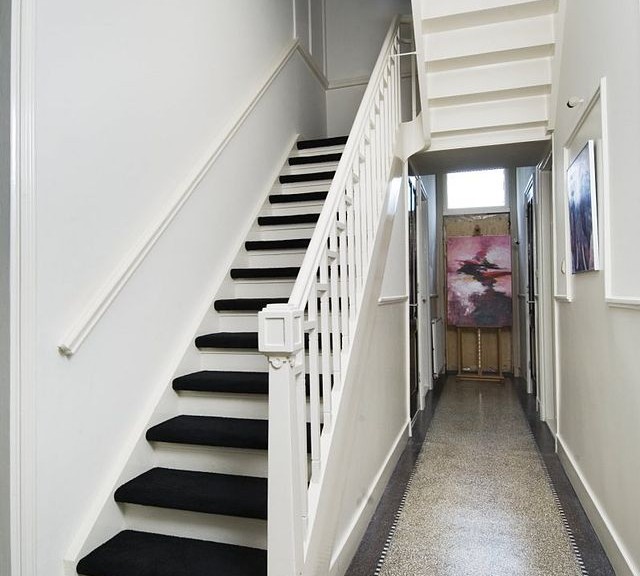The hall can be the most difficult room in the house to decorate and furnish. Halls are often awkwardly shaped, small or narrow which can leave you scratching your head in despair as you attempt to evolve a decorative scheme and layout that will prove to be both practical and visually appealing. As the hall is a space that you tend to pass through rather than occupy, it is all too tempting to devote only minimal attention to the room. However, it is the first room that visitors see when they enter your home and so it is worth spending the time and effort to achieve something special.
Clutter
A small hall is a real problem and it takes much thought and careful planning to overcome the attendant issues. Halls tend to be where shoes are removed and discarded and coats are hung and act as somewhere to drop sundry other things as you walk through the door. Halls therefore have a tendency to become cluttered which is the worst possible outcome for a small space.
The most important task to accomplish in styling your hall is to find or create the right places for those shoes and coats to be placed and stored. These things should preferably be out of view and so a cupboard is the perfect solution. If your home has a cupboard under the stairs then install coat hooks and a shoe rack in this and your problems are solved. If there is no cupboard beneath the stairs then you should strongly consider building one or using the space under the stairs to position an appropriate piece of free standing furniture.
If none of these choices is available to you then try to find cupboard space in another room and failing that you will have to put up hooks and racks in the hall and then try to keep the display of coats as tidy looking as possible.
Light
Light can be a major issue as many hallways have small windows or no windows at all. To enhance the natural light it is worth considering replacing your front door with a style that has more glass. If it is not possible to increase the amount of natural light entering the room then ensure that your light fittings create a bright environment and position mirrors on the walls to reflect light from any available source.
Colour and Pattern
Light colours work best for small spaces especially if natural light is at a premium. Darker tones will only serve to create a drab, dreary and unwelcoming space and can even be totally overpowering. Strong patterns should also be avoided. To ensure that the space has interest and texture use small splashes of colour and accent pieces to bring the room to life and to put your own stamp on it. You don’t want to clutter the space and so a simple floral display or a couple of vases or sculptures will do the trick and add contrast to simple, light walls.
Furniture
You may not have room for any furniture at all but if there is any possibility of featuring a small piece like an occasional table then this will be a valuable focal point and very also very useful for displaying your decorative items. Look for small, narrow pieces of furniture which can be accommodated in corners without becoming an obstacle or taking up too much floor space. It is great to have a focal point but you don’t want it to completely take over the room.
Mirrors
If there is one item that should always feature in a small hall then that is a Mirror. Mirrors help to increase the light in the room and will also create the illusion of space. Wall mirrors are the perfect choice as they will not encroach on your floor space and will never be an obstruction. A wall mirror will also add interest to the plain walls that you really need in a small hall and is a better choice than a painting which may overly dominate the room.
Small Halls are problematic but no matter how awkward your hall appears to be there is always a way to improve the space and to create a great first impression when people visit your home. The secret is to keep things light, simple and tidy.
Article by Sally Stacey

